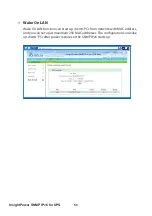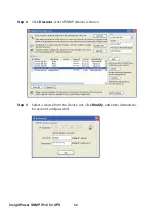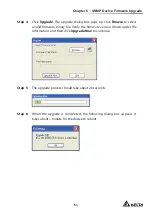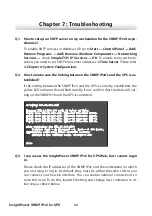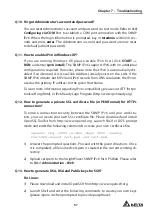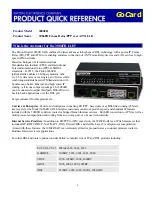
57
Chapter 7 Troubleshooting
Q10. Forgot Administrator’s account and password?
You can reset Administrator’s account and password via text mode. Refer to
4-4
Configuring via COM
Port to establish a COM port connection with the SNMP
IPv6. When the login information is prompted, key in rstadmin within 30 sec-
onds and press enter. The Administrator account and password are now reset
to default (admin/ password).
Q11. How to enable IPv6 in Windows XP?
If you are running Windows XP, please enable IPv6 first (click START
→
RUN, and enter ipv6 install). The SNMP IPv6 supports IPv6 with no additional
configurations required. However, please note that IPv6 is automatically dis-
abled if an identical LLA (Local-link Address) already exists on the LAN. If the
SNMP IPv6 obtains both IPv4 and IPv6 records from DNS resolution, the IPv4 is
used as the primary IP address for the given Host Name.
To learn more information regarding IPv6 compatibility, please visit IETF (http://
tools.ietf.org/html), or IPv6 Ready Logo Program (http://www.ipv6ready.org).
Q12. How to generate a private SSL certificate file (in PEM format) for HTTPs
connection?
To ensure connection security between the SNMP IPv6 and your worksta-
tion, you can create your own SSL certificate file. Please download and install
OpenSSL Toolkit from http://www.openssl.org. Launch Shell or DOS prompt
mode and enter the following command to create your own certificate file:
openssl req –x509 –nodes –days 3650 –newkey
rsa:1024 –keyout cert.pem –out cert.pem
1) Answer the prompted questions. Proceed with the given directions. Once
it is completed, a file named cert.pem is created in the current working di-
rectory.
2) Upload cert.pem to the InsightPower SNMP IPv6 for UPS Web. Please refer
to
5-3-1 Administration – Web
.
Q13. How to generate DSA, RSA and Public keys for SSH?
For Linux:
1) Please download and install OpenSSH from http://www.openssh.org.
2) Launch Shell and enter the following commands to create your own keys
(please ignore it when prompted to provide passphrase):








